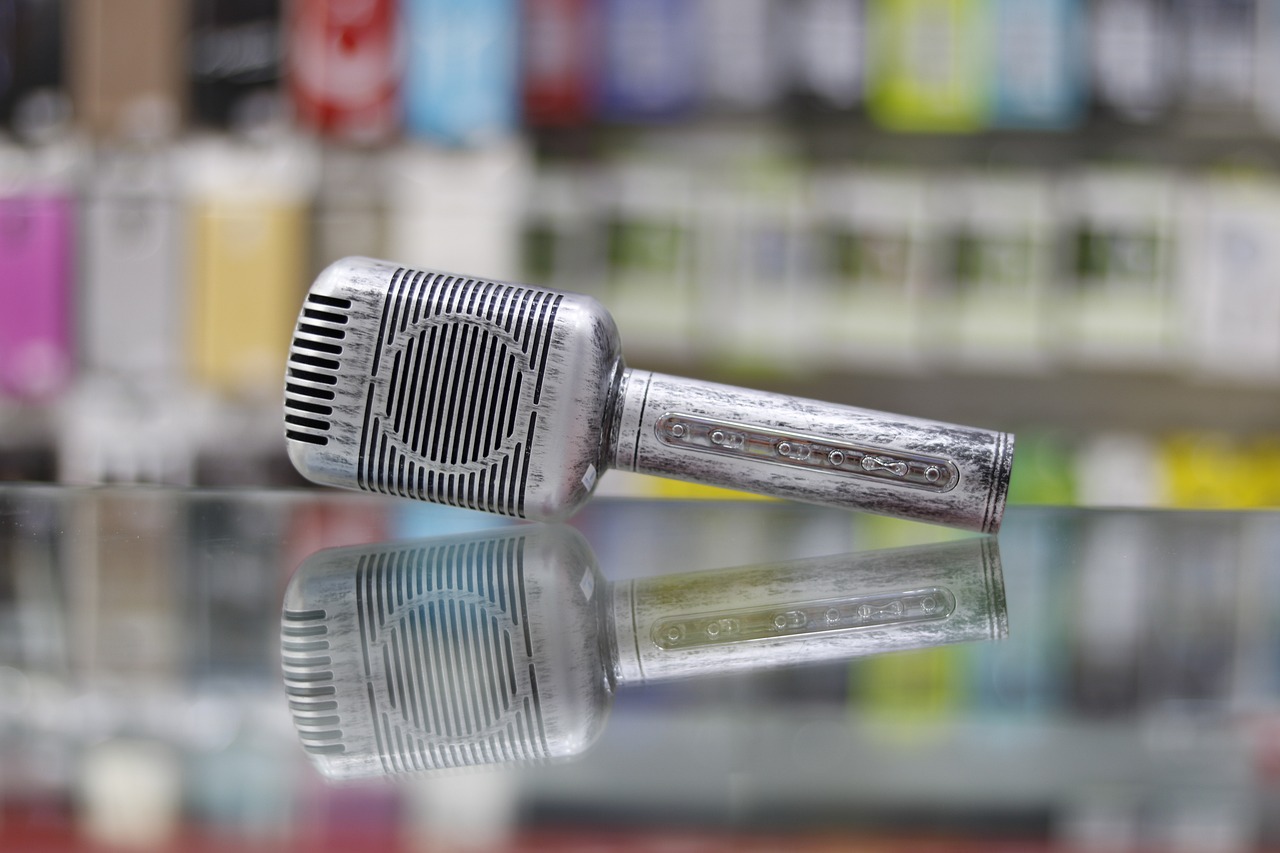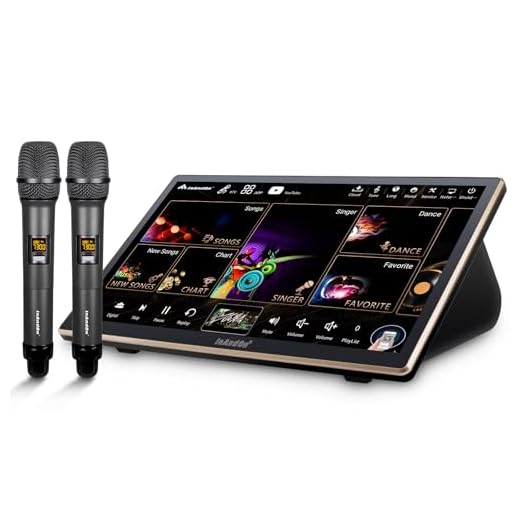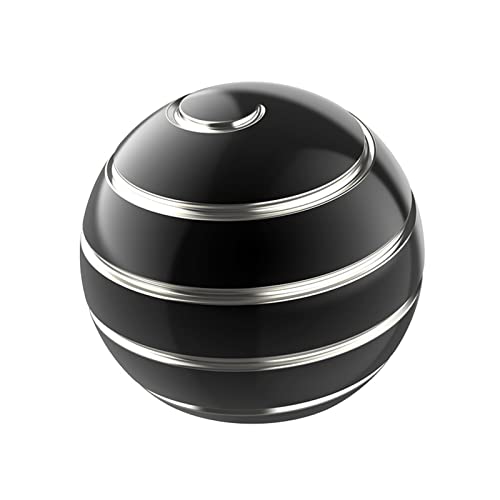Why Choosing the Right Karaoke Machine Matters (and Why You Should Care)
Thinking a karaoke machine is just a speaker and a mic? Think again. Buying the right setup is about matching features to where and how you sing — backyard ragers, cozy duets, or solo living-room rehearsals have very different needs. Pick wrong and you’ll be the guy with great enthusiasm and terrible sound.
This guide uses a simple checklist approach to help you prioritize what matters: sound, mics, connectivity, song libraries, controls, durability, and extras. You’ll avoid buyer’s remorse and bad gigs too. Read on and you’ll walk away with clear, practical priorities — not one-size-fits-all hype — so your next performance actually sounds as heroic as you believe it is.




Top 7 Karaoke Machines: Honest Reviews & Buying Guide
Sound quality and output: how loud and how good is good enough?
What “sound quality” really means for karaoke
Sound quality = clarity, balance, and the ability to deliver your voice without turning it into a foghorn or a tin can. Speaker configuration matters: woofers handle low end (the chest of the music), tweeters handle highs (sparkle and sibilance), and a good midrange is where vocals live. Powered speakers (amplifier built in) simplify setup; adding a subwoofer gives punch for big rooms or bass-heavy tracks.
Measurable specs in plain English
Frequency balance and distortion
Your vocals need clear mids. Too much bass or harsh highs will bury or bite your voice. Distortion at high volumes means the speaker is being pushed past its comfort zone — a system that sounds pleasing at medium volume is more useful than an overpowered, tinny one.
Match speaker power to room size
When to add a subwoofer: if you want felt bass, outdoor fills, or EDM-style tracks — otherwise it can muddy vocals.
Listen-before-you-buy strategies
Bring a favorite demo song with vocals and instrumentals, test at medium and loud volumes, try different genres, and pay attention to vocal clarity more than sheer loudness. Up next: microphones — how many, wired vs wireless, and what inputs you’ll need to make that great sound actually usable.
Microphones and inputs: wired, wireless, and how many mics you’ll need
Wired vs. wireless: quick tour
Wired connectors you’ll see: 1/4″ (TS) jacks for consumer gear and XLR for pro mics/mixers. XLR gives balanced audio and lower noise — preferred if you plan to patch into a mixer or PA. Wireless comes as VHF/UHF handhelds or Bluetooth mics (good for phone-based apps). Beware: cheap wireless can sound like it’s singing from the bottom of a tunnel — funny once, annoying for an hour.
Mic types: dynamic vs condenser (in plain English)
Inputs, counts, and controls
For duets/basic parties, 2 mic inputs is the sweet spot; for small groups or emcees, 4+ is handy. Prioritize:
Wireless considerations & practical tips
Practical checklist: test the mic in‑store, check included cables/clips/chargers, and prefer machines with at least two mic inputs for flexibility. Next up: how your machine gets music and lyrics onto the screen.
Connectivity and media sources: how you’ll get the music and lyrics on screen
Bluetooth streaming: lazy convenience with a caveat
Bluetooth is miracle-simple: phone → machine → sing. Great for spontaneous parties, playlists, and guests who “totally know all the words.” Downsides:
USB, SD, CD+G, and local files: reliability for offline nights
If you like prepared playlists or karaoke files, USB thumb drives and SD cards are rock-solid — no buffering, no Wi‑Fi tantrums. CD+G support (the classic lyric-on-disc format) still shows up on many machines and is useful if you own discs.
USB/SD pros: instant play, supports MP3/KAR/LRC (lyrics). Cons: you must curate files and check file‑naming/format rules.
Video outputs, aux, HDMI, and streaming apps
If you want full-screen lyrics, HDMI or RCA video outputs matter — they carry the lyric feed to a TV/projector. Some machines only output audio, leaving you to mirror a phone app for visuals.
Streaming apps (YouTube, Karafun, Smule) plug into the ecosystem: use a device with app support or a machine that can cast. Tip: for smooth on‑screen words, favor devices that explicitly list supported formats (MP3, KAR, CD+G, LRC) and mention video/HDMI lyric passthrough in the manual — nothing ruins a duet faster than “lyrics not supported” at the chorus.
Song libraries, format support, and subscriptions: where your karaoke catalog comes from
Built-in libraries vs offline files vs cloud catalogs
Some machines come preloaded with a handful or hundreds of hits — instant party starters, but often limited. Offline files (USB/SD/CD+G) let you bring your own queue and rare tracks. Cloud/streaming catalogs (KaraFun, Singa, proprietary services) offer massive, constantly updated libraries but usually charge a fee. Real-world tip: if you crave obscure ’80s deep cuts, check import options before you commit.
Key file formats: why lyrics need to travel with the audio
If on-screen words matter, prefer CD+G, KAR, or MP3+LRC. Otherwise you’ll end up mouthing “la la” while scrambling for a phone.
Subscriptions, integrations, and evaluation checklist
Subscription services give breadth and updates; many include offline caching, curated playlists, and family plans. But recurring fees add up. YouTube is a free fallback—great variety, variable lyrics and annoying ads.
Quick buying checklist:
Avoid buyer’s remorse: test demos, compare catalogs, and pick a system that lets you grow your setlist — nobody wants a party stuck on the same three choruses. Next up: how those lyrics and controls actually show up when you’re mid‑stanza.
User interface, displays, and control features: how easy is it to operate mid-song?
Why a clear interface saves your dignity
There’s nothing worse than fumbling through tiny text between verses while the room watches. A clear, responsive interface gets you back to singing faster—big buttons, obvious icons, and quick access to key functions matter more than fancy graphics.
Displays: onboard, TV, remote app
Onboard screens are handy for solo practice; TV output gives full-size lyrics for the crowd; smartphone apps turn your phone into a discreet remote. Touchscreens are great—when they’re responsive. Test latency and readability from the couch before you buy.
Controls that actually improve the performance
Quick-access features to look for:
Queue, remote, and party usability
Good systems let you build and reorder queues without interrupting the singer. Remotes should have large buttons, and app controls should sync instantly. Try these quick tips:
Ergonomics and shy-singer features
Knobs should feel solid—not wobble in your hand. Menus should be readable without a manual. Look for practice mode, vocal guides, and on-screen pitch prompts to boost confidence for the quieter guests.
Portability, build quality, and power options: will it survive your karaoke life?
How mobile do you need to be?
Think of your karaoke machine like luggage: will it live in your living room or survive a weekend of gig-hopping? Check weight, handles, and wheels—heavy-duty wheels and telescoping handles (JBL PartyBox-style designs) make transport painless; lightweight combos like the Bose S1 Pro are easy to carry and fit in tighter trunks. Metal panels and reinforced corners take punishment better than thin plastic; if you toss gear in a hatchback, get something that won’t complain.
Power options explained
Practical storage, cooling, and durability notes
Look for mic clips, cable compartments, and strap loops so nothing rattles loose mid-chorus. Small units sometimes use tiny fans—listen for fan noise in reviews; a humming fan can drown delicate harmonies. If you’ll be moving it a lot, prioritize rugged handles, corner protectors, and rubber feet.
Buying tips by use case
Choose a machine that actually fits your car and personality—preferably one that won’t hold a grudge when thrown in the trunk. Next up: bonus bells, warranties, and how to avoid buyer’s remorse.
Extra features, warranties, and practical purchasing tips: bells, whistles, and how to avoid buyer’s remorse
Useful bells and whistles (and when they matter)
Vocal effects like auto‑tune, reverb, and harmony can save a shaky chorus night—great for parties, less useful if you want natural sound. Recording to USB/microSD turns karaoke into a keepsake (or a cringe compilation). Onboard mixers and line outputs let you feed an external PA or recorder; HDMI passthrough makes hooking into a TV painless. Party lighting, scoring/competition modes, and app-based remote song requests add theater and audience interaction—think Singing Machine or Karaoke USA for budget fun, JBL/BOSE-style rigs for fancier kit.
Warranties, support, and reviews
Look for at least a one‑year warranty and an accessible support channel (phone + email). Check return policies (30 days is ideal) and restocking fees. In reviews, prioritize long‑term reliability and customer service stories over initial spec lists—people will complain about broken mics or flaky Bluetooth long after the buzz of launch.
Budget vs premium trade-offs
Budget: fewer effects, lower wattage, cheaper mics—but great for casual home use. Premium: better build, cleaner preamps, serviceable parts, and real line outputs—worthwhile if you gig or keep gear mobile.
Accessories worth buying
Quick comparison checklist (in-store/online)
Tips for buying used
Test all ports/mics, listen for fan noise, request recent photos, confirm battery health/firmware, and get a receipt or serial number.
With these checks, you’ll avoid regrets and pick a machine that actually gets used—next up: the final curtain call.
Final curtain call: pick what makes you sing
Prioritize sound and microphone quality first, then match connectivity and library options to how you actually like to find songs. Balance portability, build, and extras against your budget and space—better to have a reliable setup you use than an overbuilt unit that collects dust. Test with your own voice or favorite tune before buying.
Keep expectations realistic and focus on fun: you’re buying entertainment, not a casting coach. Now go practice that dramatic final note—neighbors and shower acoustics beware! Try one at a store or a friend’s party this weekend —seriously, sing.








Good article, but a heads up from someone who learned the hard way:
Check warranty and return windows closely. I bought an Ikarao unit that started glitching after 45 days and the seller’s return policy was trash. 😑
Also read the small print on ‘free’ song libraries — sometimes you pay later.
Buyer’s remorse is real, folks. 🛑
Thanks for the tip. I’ll be checking the return policy and asking about long-term support before I click buy on the touchscreen system.
Ouch, Leah — sorry you had that experience. I’ll expand the warranties and returns section to include a checklist of red flags and questions to ask the seller before buying.
Comparing a Portable Bluetooth Karaoke Speaker vs the Bose S1 Pro+: if you want crisp vocals and room-filling sound the Bose is worth it. The Bluetooth portable units are best for casual sing-alongs and travel.
I also liked the article’s section on user interface — for me, a simple on-device control scheme beats relying on a phone app mid-song.
If you actually plan to perform (microphone technique and all) the Bose is closer to a real PA — vocals sit better in the mix.
Bose is pricier, but their build quality means it lasts. Bought one 3 years ago and still going strong.
Agree. Also check if the Bose supports line-in and multiple mic inputs — more flexible for semi-pro setups.
Thanks Ava — I’ll add a quick comparison table: casual portable vs pro portable (features, ports, battery, price).
Great roundup — thanks!
I bought a Bose S1 Pro+ last year for backyard parties and the difference in sound quality vs a cheap portable Bluetooth karaoke speaker is night and day. It actually fills a small patio without distortion.
Two things I wish the article stressed more: battery runtime (Bose lasts waaay longer than generic models) and mic quality — Pyle’s VHF set is cheap and ok, but has dropouts sometimes.
If you want something that’s both portable and loud, the Bose is worth the splurge imo.
Thanks for sharing your experience, Maya — good point on battery runtime. I’ll add a note about checking continuous playback hours and rechargeable vs. replaceable batteries in the final edit.
Subwoofer for karaoke? Now we’re getting dangerous 😂 But yes, agree on mic quality — sometimes I scream a 90s ballad and cheap mics just give up.
Totally agree. For outdoor use the S1 Pro+ is a game changer. If you need more inputs or bigger rooms, look at pairing it with a small powered sub later.
Omg the InAndOn 18.5-inch Touchscreen with 650K songs sounds like a dream for my family gatherings. Quick q: do those huge libraries usually require ongoing subscriptions or are they preloaded? Also — how easy is the UI mid-song? I hate fumbling with menus while someone’s waiting to sing.
Would love a short section comparing built-in libraries vs streaming apps (like how the article covered connectivity but not the subscription hassle).
Good question, Hannah. Many of the big touchscreen systems come with a large preloaded library but often offer subscription updates for newer songs. UI smoothness varies by brand — InAndOn tends to have an intuitive touchscreen, but check reviews for lag. I’ll expand the article to compare built-in libs vs streaming services.
Tip: bring up the song list screen before the next singer — less fumbling if the UI is slow. 😉
I have the InAndOn for a year — most hits are preloaded, but recent releases required a paid update. The touchscreen is decent but not as snappy as a tablet.
If you plan to rely on subscriptions, check file formats too. Some machines don’t play certain file types, so streaming via Bluetooth might actually be simpler.
Also ask if the machine lets you import USB songs. That saved me when the wifi was acting up.
Love the coverage on song libraries and format support. One extra thing to watch: some machines only accept specific karaoke file formats (.kar, .cdg, MP3+G), so if you’re planning to import a big custom catalog or buy used, verify compatibility.
Also, buying used can be great for saving cash, but ask about mic condition, screen burn-in (for touchscreens), and whether firmware updates are available. I scored an Ikarao 280W used and it sings fine, but had to update firmware to fix a Bluetooth bug.
Excellent practical tips, Ethan. I’ll weave the format compatibility and used-buying checklist into the article’s practical purchasing tips section.
Firmware updates fixed a lot of issues for me too. Always ask if the seller did updates and keep proof of purchase for future support.
Good call on screen burn-in — I returned a touchscreen once because the menu ghosting made lyrics hard to read. Always test the display before finalizing a used purchase.
Picked up a Portable Bluetooth Karaoke Speaker with Two Mics for impromptu apartment nights. Cheap, simple, does the job. Mics feel cheap but for the price you can’t complain.
Pyle Dual-Channel VHF Wireless Microphone System — got it for under $100 and it works fine for house parties. Note: VHF can pick up TV or walkie-talkie interference in some areas, so test it before a big night.
Quick question: for small group parties, do I really need a dual-channel wireless mic system like the Pyle Dual-Channel VHF, or are wired mics ok? I want low fuss but also decent sound.
If you want less cable clutter and easier stage movement, go wireless. VHF systems like the Pyle are budget-friendly but can be susceptible to interference; UHF is more stable. Wired mics give better reliability for the price but sacrifice mobility. Choose based on venue and how much walking-around you want.
Haha the “Final curtain call: pick what makes you sing” line made me snort coffee. Real talk — I have a Mini Portable Karaoke Speaker with Two Mics for movie-night singalongs and it’s ridiculously fun. It won’t win any audiophile awards but:
– It’s light
– Two mics = instant duet chaos
– Fits under my couch when guests leave
Also, buyers beware: tiny speakers = tiny boom. Don’t expect concert vibes. 🤷♀️
Also check warranty — mini units often have shorter coverage. Saved me from buying a second one when my first developed a buzz after 6 months.
Pro tip: pair a mini speaker with an external sub or use a Bluetooth receiver into a bookshelf speaker for better sound without losing portability.
Love the humor, Sophie. Good reminder that small, fun units are perfect for casual nights. I’ll call that out as a feature not a flaw.
Exactly — not everything needs to be pro-level. For friends and quick parties, convenience > pure power sometimes.
I accidentally bought two mics that were wired the same and one kept unplugging during Mario Kart. Lesson learned: check build quality 🙃
Haha, wiring chaos is a classic. I’ll add a short checklist for testing mic ports and cable strain relief before you commit to a purchase.
I’m torn between the Ikarao Portable 140W (with screen) and the Ikarao 280W with 10.1-inch screen. Bigger wattage looks tempting, but will it actually matter in a living-room karaoke night? Also: how heavy are these to lug around for a party at a friend’s place?
Good point, Omar. For portability most people prefer the 140W for home/portable use. If you’re hosting bigger groups or small events, 280W gives headroom. I’ll add a quick weight/power tradeoff table to the article.
140W is plenty for living-room stuff. 280W is better for larger rooms or if you like it loud. Check the actual weight specs though — higher wattage usually means heavier build.